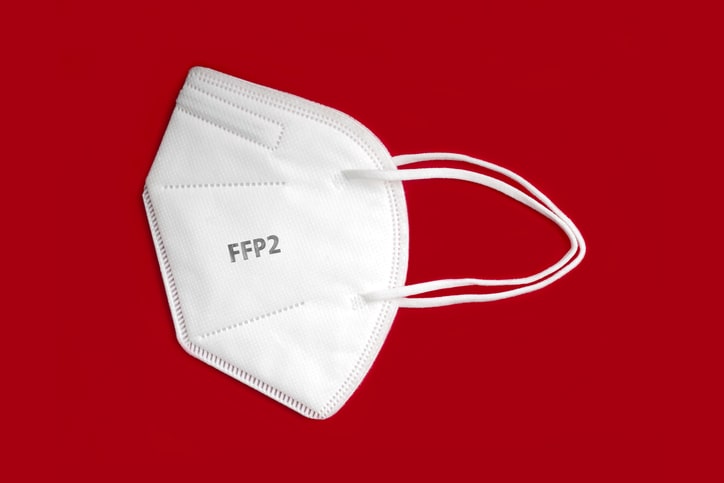
Patients who receive nephrology care prior to initiation of treatment for end-stage kidney disease (ESKD) experience improved survival as well as other key outcomes such as reduced hospitalizations and complications, increased quality of life, better preparation for dialysis, and greater likelihood of receiving a kidney transplant. In most cases, chronic kidney disease (CKD) is initially detected by primary care physicians who then have an important role in the decision regarding referral to a nephrologist.
Guidelines recommend referral to nephrology care for patients with an estimated glomerular filtration rate (eGFR) of >30 mL/min/1.73 m2, severely increased albuminuria, rapid decline in eGFR, hematuria, and/or uncontrolled complications of CKD, including hypertension that requires four or more antihypertensive agents, anemia, or electrolyte abnormalities. However, according to Tanjala S. Purnell, PhD, MPH, and colleagues, late referral to nephrology care is common; recent reports suggest that only approximately one-third of patients with CKD receive nephrology care at least 12 months prior to initiation of ESKD therapy.
Patients with CKD who are part of a demographic group such as young adults and racial/ethnic minorities are known to experience more rapid decline in kidney function; clinicians are advised to refer those patients to a nephrologist. However, results of previous studies suggest racial/ethnic disparities in timely receipt of nephrology care.
The Healthy People 2020 initiative (HP2020), coordinated by the US Department of Health and Human Services, includes 10-year targets for specific outcomes. The HP2020 CKD-specific objectives include increasing the proportion of CKD patients receiving care from a nephrologist at least 12 months prior to initiation of renal replacement therapy. One in four overarching HP2020 goals is to eliminate healthcare disparities.
Dr. Purnell et al. conducted a cross-sectional study designed to examine national trends in racial/ethnic disparities in the receipt of nephrology care at least 12 months prior to initiation of dialysis in the United States from 2005 to 2015. Results of the study were reported in JAMA Network Open [doi:10.1001/jamanetworkopen.2020.15003].
The study utilized data from the US Renal Data System, a national data system that collects, analyzes, and distributes information on ESKD in the United States. The study examined data of 1,000,390 adults who initiated maintenance dialysis from January 1, 2005, to December 31, 2015. National trends in racial/ethnic disparities in receipt of predialysis nephrology care were examined using multivariable logistic regression models with adjustments for potential confounders. The main outcome of interest was receipt of at least 12 months of predialysis nephrology care as determined by clinician-based documentation on the End Stage Renal Disease Medical Evidence Report Form CMS 2728.
Of the 1,000,390 eligible patients, 54.6% (n=546,132) were white, 27.8% (n=278,317) were Black, 14.0% (n=139,854) were Hispanic, and 3.6% (n=36,087) were Asian. Of the total cohort, 31.1% (n=310,743) received at least 12 months of nephrology care prior to initiation of dialysis. Mean age remained relatively consistent over the course of the study. Body mass index was greater in the 2005-2007 cohort versus the 2014-2015 cohort, and the prevalence of male patients was greater in the 2005-2007 cohort versus the 2014-2105 cohort. Compared with Asian and white patients, Black and Hispanic patients were younger and less likely to have private insurance. Among Black and Hispanic patients, the prevalence of ESKD attributed to hypertension or diabetes was highest; the prevalence of ESKD attributed to glomerular diseases or other causes was highest among white and Asian patients.
The unadjusted proportion of adults who received at least 12 months of predialysis nephrology care increased from the 2005 to 2007 cohort to the 2014 to 2015 cohorts by 30.1% to 39.5% among white adults, by 24.5% to 32.5% among Black adults, by 21.2% to 28.3% among Hispanic adults, and by 26.1% to 37.1% among Asian adults.
However, there was no improvement in the magnitude of racial/ethnic disparities during the study period. In the 2005 to 2007 cohort compared with receipt of at least 12 months of predialysis nephrology care among white adults, the adjusted odds ratio (aOR) was 0.82 (95% confidence interval [CI], 0.80-0.84) among Black adults, 0.67 (95% CI, 0.65-0.69) among Hispanic adults, and 0.84 (95% CI, 0.80-0.89) among Asian adults. In the 2014 to 2015 cohort, the aOR was 0.76 (95% CI, 0.74-0.78) among Black adults, 0.61 (95% CI, 0.60-0.63) among Hispanic adults, and 0.90 (95% CI, 0.86-0.95) among Asian adults.
Results of exploratory mediation analysis from incremental multivariable logistic regression models suggested adjustments for differences in health insurance type were more strongly associated with slight attenuation of racial/ethnic disparities in receipt of nephrology care at least 12 months prior to initiation of dialysis among Black patients (aORs, 0.94 [95% CI, 0.93-0.94] in the 2005-2007 cohort vs 0.93 [95% CI, 0.93-0.94] in the 2008-2010 and 2011-2013 cohorts) and Hispanic patients (aORs, 0.89 [95% CI, 0.88-0.89] to 0.88 [95% CI, 0.88-0.89] for the 2005-2007 vs 2014-2015 cohorts) than adjustments for comorbid medical conditions, type of dialysis modality, or type of vascular access. However, there was no statistically significant improvement in the magnitude of racial/ethnic disparities even in fully adjusted models.
Limitations to the study cited by the authors included the primary study outcome being subject to the accuracy of physician-provided retrospective data, the inability to further subcategorize the racial/ethnic categories available in the USRDS registry, and the inability to account for individual- or household-level patient income.
In conclusion, the researchers said, “In this national study of more than 1 million US adults with ESKD, racial and ethnic disparities in receipt of at least 12 months of predialysis nephrology care did not substantially improve from 2005 to 2015. These findings suggest that national strategies to address disparities in predialysis healthcare are needed.”
Takeaway Points
- Patients with chronic kidney disease who receive nephrology care at least 12 months prior to initiation of dialysis experience improved survival as well as other key outcomes.
- Researchers conducted a cross-sectional national registry study to examine national trends in racial/ethnic disparities in receipt of predialysis nephrology care at least 12 months prior to dialysis initiation.
- Using data from the US Renal Data System, the study findings suggest there was no statistically significant improvement in racial and ethnic disparities in predialysis care from 2005 to 2015.







 © 2025 Mashup Media, LLC, a Formedics Property. All Rights Reserved.
© 2025 Mashup Media, LLC, a Formedics Property. All Rights Reserved.